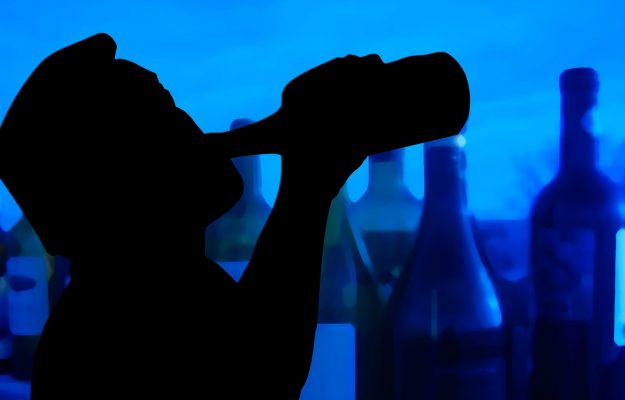Wine is consumed in the Mediterranean diet, in moderation, with meals and it is considered not only an alcoholic beverage or liquid food, but also a cultural product and a facilitator for socializing. Plus, it is one of the top and most important obstacles to alcohol abuse, which is a still far-reaching problem in various Northern European countries, and beyond. However, the weight of excess drinking is continuing to be felt in Italy as well. According to ISTAT data, in the past few years, the trend has been confirmed showing an increase in occasional alcohol consumption (from 44% to 46%) and consumption between meals (from 29% to 30%), while a slight decrease in daily consumption has been observed (from 21.4% to 20.6%). There is also a decrease in the consumption of exclusively wine or beer, while the habit of consuming other spirits along with wine and beer is increasing, especially among women aged 45 and over. The annual “Report of the Minister of Health to Parliament on the interventions carried out pursuant to Law number 125 of 2001 on alcohol and alcohol related problems” clearly stated these facts, even though the data refers to 2018. The report was presented in Parliament just a few days ago, later than usual, because of the Covid-19 emergency. The report revealed, among other things, that the World Health Organization has estimated the cost of social and health alcohol-related problems, for Italy, to be 25 billion euros per year, “but a completely preventable negative impact is possible by adopting healthier behaviors, styles and patterns of alcohol consumption”. These are the figures, even though consumption, calculated in quantity of “pure alcohol”, in Italy, over the past 20 years has been in sharp decline (-22.5%), much more significant than the European average (-9.3 %).
“Analyzing the data by type of drink, it is evident that over the past 20 years, the majority of liters of pure alcohol in Italy, has been wine consumption, followed by beer and finally hard liquors. Over the years, however, the proportion of liters of alcohol consumed while drinking wine decreased from 6.98 in 1996 to 4.58 in 2016, while alcohol consumed while drinking beer increased (from 1.41 to 1.80 respectively). Comparing the Italian data with the average in European countries, the average per capita consumption of wine has decreased in Italy much more than in other countries (-34.4% against -13.2%). Instead, compared to an increase in the average per capita consumption of beer at 27.7% recorded in Italy, on the European level there is a 5.6% decrease over the same period. Alcohol consumed by drinking liquors and other spirits has decreased both in Italy, by -1.4%, and in European countries (-10.0%).
On the whole, the report revealed that in Italy there are 8.7 million consumers at risk, 65.000 alcohol-dependent people being treated at alcohol abuse centers, and over 5.000 road accidents due to alcohol abuse detected by the Police and Carabinieri alone. The prevalence of consumers at risk, elaborated through the summary indicator of Istituto Superiore di Sanità, the Italian health institute, showed that in 2018, 23.4% of men and 8.9% of women over the age of 11, for a total of almost 8.700.000 individuals, did not comply with public health indications on the consumption of alcoholic beverages (i.e., the Guidelines for a healthy diet - Research and Nutrition Center year 2018, where for low-risk consumption is less than 10 grams of alcohol per day for women and the elderly, and less than 20 for men, ed.). The population group most at risk for both genders is those who are 16-17 years old, followed by the elderly over 65.
“It is probably due to lack of knowledge or awareness of the risks that alcohol causes to health”, reads the report summary, “that 800.000 minors and 2.700.000 over 65 years of age individuals are to be considered at risk for alcohol-related diseases and problems, precisely the sensitive population targets for which the WHO and the European Commission recommend intervention actions, aimed at making people aware of the non-compliance of their consumption with public health recommendations”. The male at-risk consumers are prevalently higher than women for all age groups, except for young people.
One of the dangerous behaviors of consuming alcoholic beverages among young people is binge drinking, which still represents the most widespread and consolidated habit. According to the study on consumption patterns, in 2018 the phenomenon of binge drinking among young people referred to 17.2% of people between 18 and 24 years of age, and of these 22.6% males and 11.1% females; these data overlap with those of the previous year (ISTAT).
An interesting fact is that apparently the share of consumers of alcoholic beverages increases as the degree of school studies increases. This seems to happen especially for women and, above all, in relation to consumption between meals. The opposite trend is daily consumption, which increases as the education qualifications decrease, especially for men. Additionally, it appears that the total of alcohol-attributable deaths (2016 data) was 1.290, of which 1.032 men and 258 women, a slight increase. In 2018, however, there were 5.097 on the road accidents, in which one of the two drivers was in a state of intoxication, 8.7% of the total (compared to 7.8% in 2017), according to data from the Carabinieri and the Traffic Police.
Copyright © 2000/2025
Contatti: info@winenews.it
Seguici anche su Twitter: @WineNewsIt
Seguici anche su Facebook: @winenewsit
Questo articolo è tratto dall'archivio di WineNews - Tutti i diritti riservati - Copyright © 2000/2025








































































































































































































